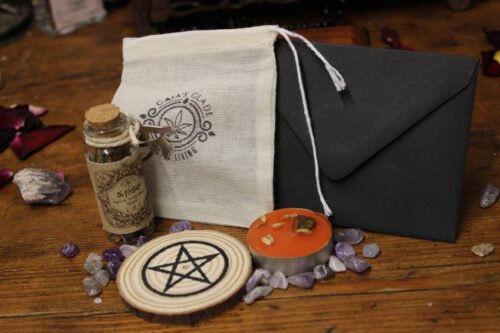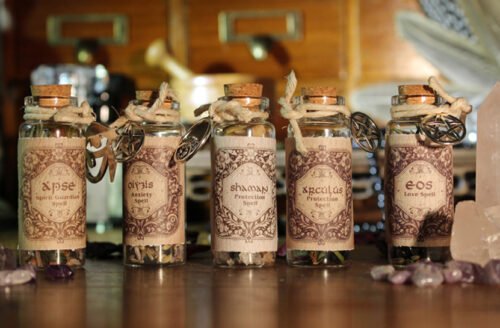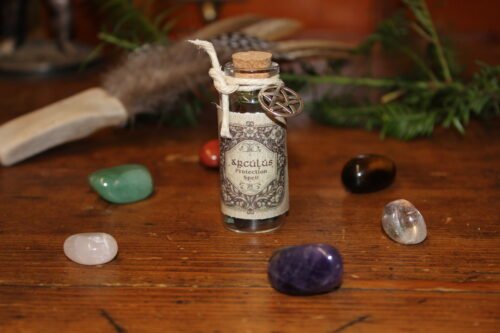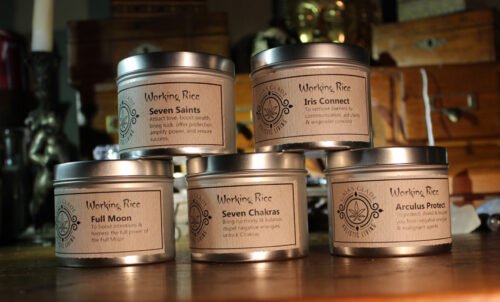
Using Lamb’s Ear Plant for Witch purposes
The Spiritual and Witchy Uses of Lamb’s Ear Plant
Lamb’s ear (Stachys byzantina), known for its soft, velvety leaves, has been valued in various spiritual and magical traditions. Here are some of the spiritual and witchy uses of lamb’s ear:
- Protection
Lamb’s ear is often associated with protection. Its fuzzy texture is believed to create a gentle but effective barrier against negative energies. Witches might carry a leaf in their pockets or place it in their homes to ward off harm and protect against evil spirits. According to “The Witch’s Herbal Apothecary” by Marysia Miernowska, lamb’s ear can be used in protective charms and amulets to shield against negativity.
- Healing
Traditionally, lamb’s ear has been used for its healing properties. It is known to have antiseptic and anti-inflammatory qualities, which translate into spiritual healing as well. It is used in rituals to promote physical and emotional healing, often included in healing sachets or baths. Nicholas Culpeper, in his “Complete Herbal,” highlighted the plant’s wound-healing abilities, which modern witches incorporate into healing rituals.
-

Growing Lamb’s Ear
Calming and Comfort
The soft texture of lamb’s ear symbolizes comfort and calm. It is used in spells and rituals to soothe anxiety, bring peace, and promote a sense of security. Placing lamb’s ear under a pillow is said to aid in restful sleep and pleasant dreams. Scott Cunningham, in “Cunningham’s Encyclopaedia of Magical Herbs,” suggests that lamb’s ear can be used in sleep pillows to encourage tranquil and restful sleep.
- Communication with Spirits
Lamb’s ear is sometimes used in practices aimed at enhancing communication with spirits or the divine. Its gentle energy is believed to facilitate clearer and safer interactions with otherworldly beings. It can be used in meditative practices or placed on altars dedicated to spirit communication. According to “The Green Witch” by Arin Murphy-Hiscock, plants like lamb’s ear help create a peaceful environment conducive to spiritual communication.
- Grounding
The plant is associated with grounding energy, helping to connect individuals to the Earth and stabilize their energy. In rituals, lamb’s ear can be used to anchor one’s spirit and provide a steady, calming influence, making it easier to focus and center oneself. “Earth Power” by Scott Cunningham discusses the importance of grounding herbs in maintaining balance and stability.
- Love and Friendship
Lamb’s ear is also seen as a symbol of tenderness and gentle affection, making it useful in spells and charms to attract love and strengthen friendships. It can be included in love sachets or given as a gift to signify caring and loyalty. Llewellyn’s “Complete Book of Correspondences” notes that lamb’s ear can be used to enhance feelings of love and friendship.
-

Lamb’s Ear Plant used for Witchcraft
Beauty and Abundance
Given its attractive appearance, lamb’s ear is used in rituals and spells aimed at enhancing beauty and attracting abundance. It can be incorporated into beauty spells or used as an offering in rituals to invoke prosperity and growth. In “The Herbal Alchemist’s Handbook,” Karen Harrison mentions the use of aesthetically pleasing plants like lamb’s ear in rituals for beauty and abundance.
Practical Uses in Witchcraft
- Sachets and Mojo Bags: Dried lamb’s ear leaves can be added to sachets or mojo bags for protection, healing, or calming purposes.
- Baths: Adding lamb’s ear to a ritual bath can promote healing and relaxation.
- Altars: Fresh or dried leaves can be placed on altars to invoke protection, grounding, or to honour nature spirits.
- Incense: Lamb’s ear can be dried and used in incense blends to enhance protective and calming rituals.
Historical and Folklore Context
Historically, lamb’s ear has been used as a natural bandage due to its soft texture and antiseptic properties, which has translated into its symbolic use in spiritual healing and protection. Folklore suggests that the plant’s soft, fuzzy leaves resemble the ears of lambs, which are often seen as symbols of innocence and gentleness, further reinforcing its use in rituals promoting peace and comfort .
Sources:
- Culpeper, Nicholas. “Complete Herbal.” W. Foulsham & Co., 1653.
- Miernowska, Marysia. “The Witch’s Herbal Apothecary.” Fair Winds Press, 2020.
- Cunningham, Scott. “Cunningham’s Encyclopedia of Magical Herbs.” Llewellyn Publications, 1985.
- Murphy-Hiscock, Arin. “The Green Witch.” Adams Media, 2017.
- Cunningham, Scott. “Earth Power.” Llewellyn Publications, 1983.
- Llewellyn. “Complete Book of Correspondences.” Llewellyn Publications, 2013.
- Harrison, Karen. “The Herbal Alchemist’s Handbook.” Weiser Books, 2011.
- “The Practical Herbal Medicine Handbook: Your Quick Reference Guide to Healing Herbs & Remedies.” Althea Press, 2014.









